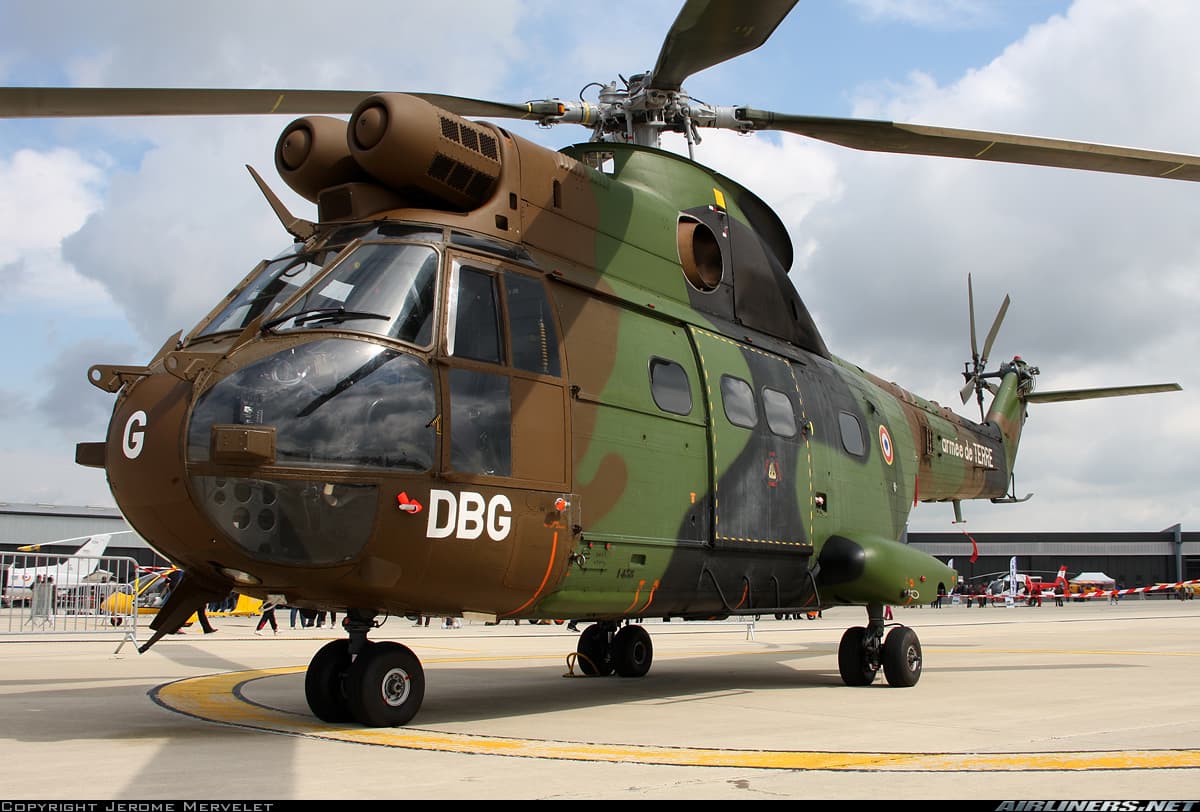- Yes
- No
Hello everyone, and welcome to a new suggestion.
Today, I’m talking to you about one of the most iconic helicopters of the French armed forces.
The Puma, officially designated SA 330 Puma, is a military transport helicopter developed by Sud Aviation (later Aérospatiale) in the 1960s, in response to a request from the French Army. Its first flight took place in 1965, and it entered service in 1969. It is a medium twin-engine helicopter, designed to transport troops, equipment, or carry out medical evacuations. The Puma was quickly praised for its robustness, maneuverability, and ability to operate in difficult conditions. It enjoyed great export success, notably thanks to a cooperation with Westland Helicopters in the United Kingdom. This model marked a turning point in French military aviation by providing increased tactical mobility capabilities. It would also serve as the basis for the development of the Super Puma, Cougar, and Caracal helicopters, which were its successive evolutions.
In the French Army, the SA 330 Puma has long been the backbone of tactical helicopter transport, primarily within the ALAT (Army Light Aviation). It has been deployed in almost every theater of external operations since the 1970s: Africa, the Balkans, Afghanistan, the Sahel, etc. Capable of carrying up to 20 equipped soldiers or approximately 2 tons of cargo, it has proven its effectiveness in logistics transport, troop support, medical evacuation, and emergency response missions. Thanks to its ease of maintenance and robustness, it has remained operational well beyond its initial lifespan. The Puma is currently being phased out of service, replaced by more modern helicopters such as the Cougar, the Caracal, and soon the H160M Guépard, but it remains an emblematic aircraft of French military aviation.
Characteristics
-
Length : 18.20m
-
Width : 15.09m
-
Height : 5.15m
-
Weight :
- Min : 3,615kg
- Max : 7,500kg
The aircraft is powered by two Turboméca IIIC 4 turbines of 1350 horsepower each. This allows it to reach a maximum speed of 300 km/h and an altitude of 6000 m.
Equipments
-
GEC Avionics Heli-Tele TV Camera
This TV camera system allows the detection of targets upstream of the battlefield and also allows the targeting of HOT and TOW missiles -
Orchidée radar
The Orchidée radar (Observation Radar Cohérent Héliporté d’Investigation des Éléments Ennemis) is a radar that folds under the tail of the aircraft. It is a radar designed to detect air and ground targets within a radius of 70 km (or 150 km depending on the source). This system was used during Operation Daguet in Iraq, during which the Pumas were used to identify and guide American Apaches to their targets.

-
SAPHIR decoy launcher
Initially lacking countermeasures, the Puma was subsequently equipped with SAPHIR decoy launchers to ensure its self-defense. -
DAR (DRAX33) RWR
RWR which is found on a large number of aircraft from the same era. This system, composed of four sensors distributed around the hull, allows threats to be detected at a 360° angle. This system was installed during the 1990s. -
Chlio FLIR
The Flir CHLIO present on many European aircraft can be installed on the aircraft, although its use remains uncommon and is mainly used for SAR operations.
Weapons
Although the Pumas were not often equipped with armament due to their role as troop carriers, they were still capable of carrying a large amount of equipment to meet different missions. With two hardpoints (one on each side of the hull), the Puma can carry the various weapons below
-
20mm Giat cannon
This cannon, which would be found on many French aircraft after the Puma, is iconic of the ALAT. Mounted in the aircraft’s cargo bay and facing starboard, this cannon provided cover for ground forces. Aircraft equipped with it would receive the designation “Puma Pirate.” -
AS-12 missiles
Well known to French aircraft, the AS-12 is a guided missile present on many helicopters; the Puma can carry a total of 4 (Two per harpoints). -
HOT-2 missiles
The European HOT missiles can be equipped with 4 units per hardpoint thanks to the quad launcher that will be found on more modern French aircraft. -
TOW-2 missiles
In order to open the sales market for the aircraft, the American TOW missiles are compatible and can be embarked in a double launcher, bringing a capacity of 4 missiles on the Puma. -
Matra Mistral
To ensure its defenses, the Puma can be equipped with two dual Mistral missile launchers. These missiles allow it to defend itself against low-flying targets. -
2.75 inch rockets
A pod of 19 2.75-inch rockets can be installed on each side of the aircraft, allowing it to deal with lightly armored targets.
In addition to these weapons, various machine guns can be installed on the cabin windows, including MAG58 or GPMG 7.62mm for self-defense.
A 30mm cannon was tested by the CEV under the nose of the aircraft to ensure its self-defense. This proposal was retained for the Puma SOCAT produced in Romania.
In-game, this helicopter would bring a new style of gameplay to the French tree, allowing the addition of a heavier but also less armed helicopter. This would be an interesting bridge before the arrival of similar, more modern helicopters in the tree such as the Super Puma, Cougar or Caracal.
Video
Vol en Hélico Puma en Afrique - YouTube
Le Puma : 50 ans de service opérationnel dans l’armée de l’Air et de l’Espace
French Puma Helicopter Dumping Flares
Sources
- Puma, hélicoptère, SA 330
- Puma sa 330
- Aérospatiale SA.330 Puma — avionslegendaires.net
- CP_SA330Puma.pdf
- D’Orchidée à Horizon, quand l’ALAT voulait ses AWACS — Dossier avionslegendaires.net
- L’armée de terre française souhaite envoyer le radar Orchidée en Arabie Saoudite
- ImagesDéfense - Essais de l’hélicoptère Super Puma muni du système Orchidée (observatoire radar cohérent héliporté d’investigation des éléments ennemis).
- ImagesDéfense - Lance-leurres SAPHIR (de Matra Défense) sur hélicoptère Puma SA-330.








